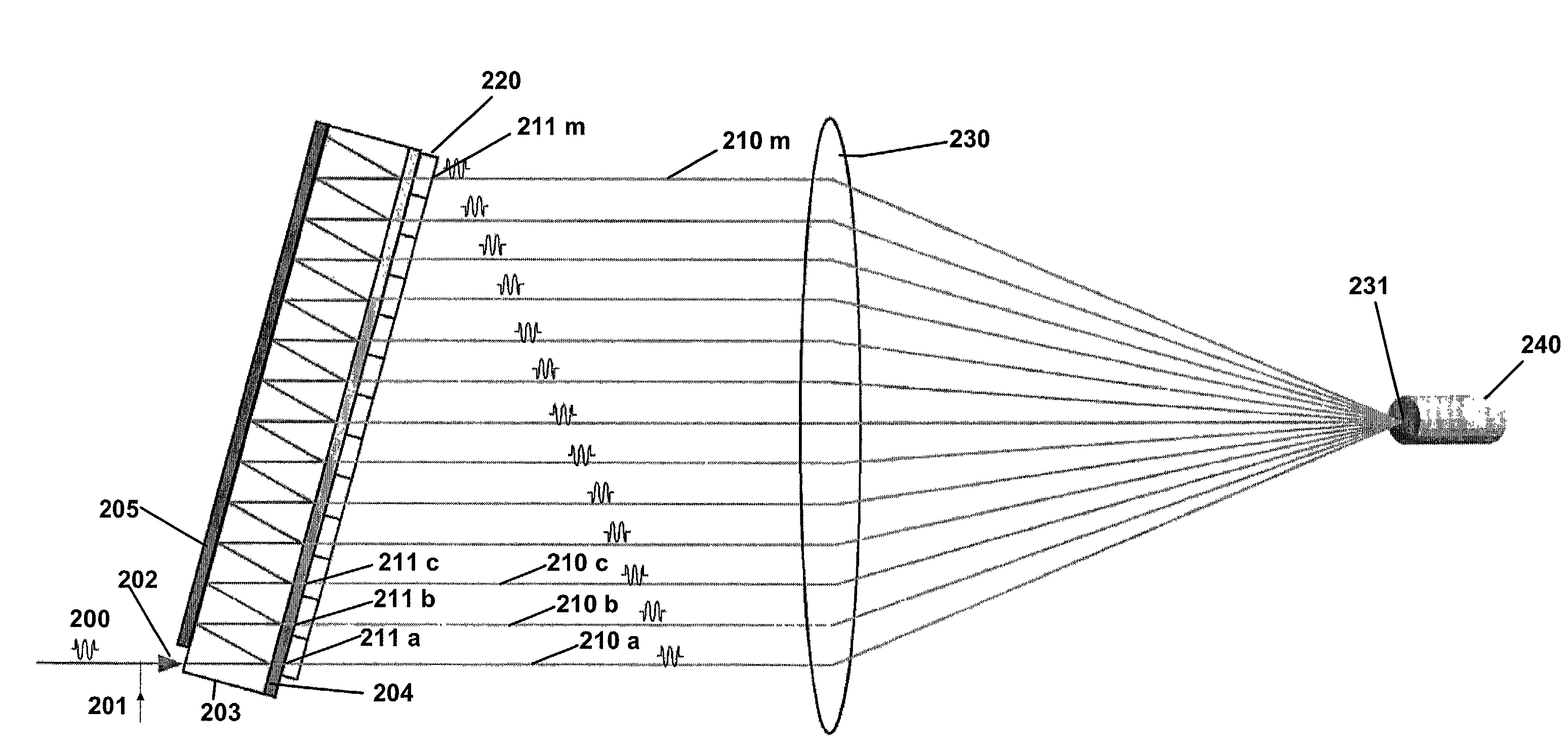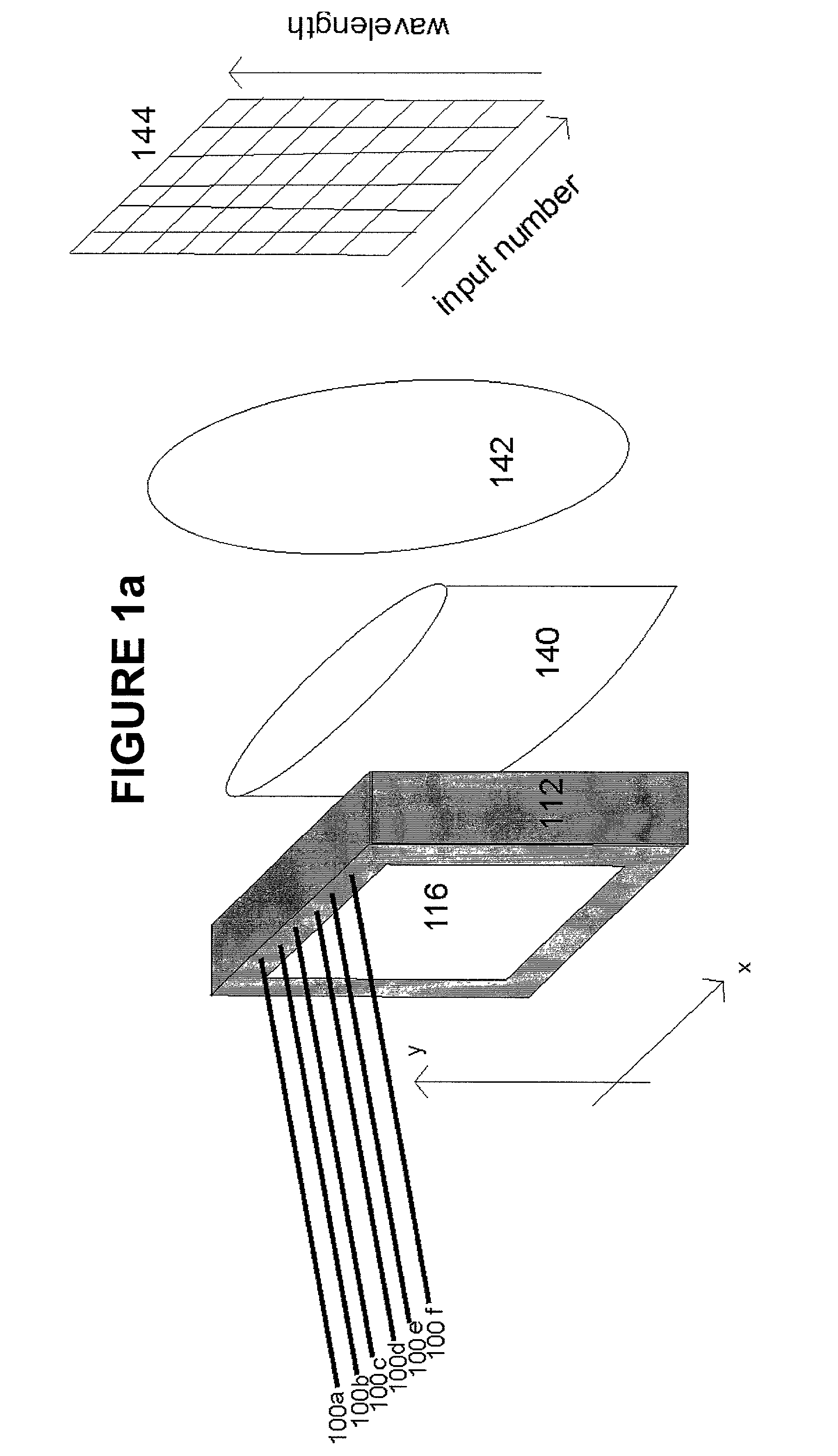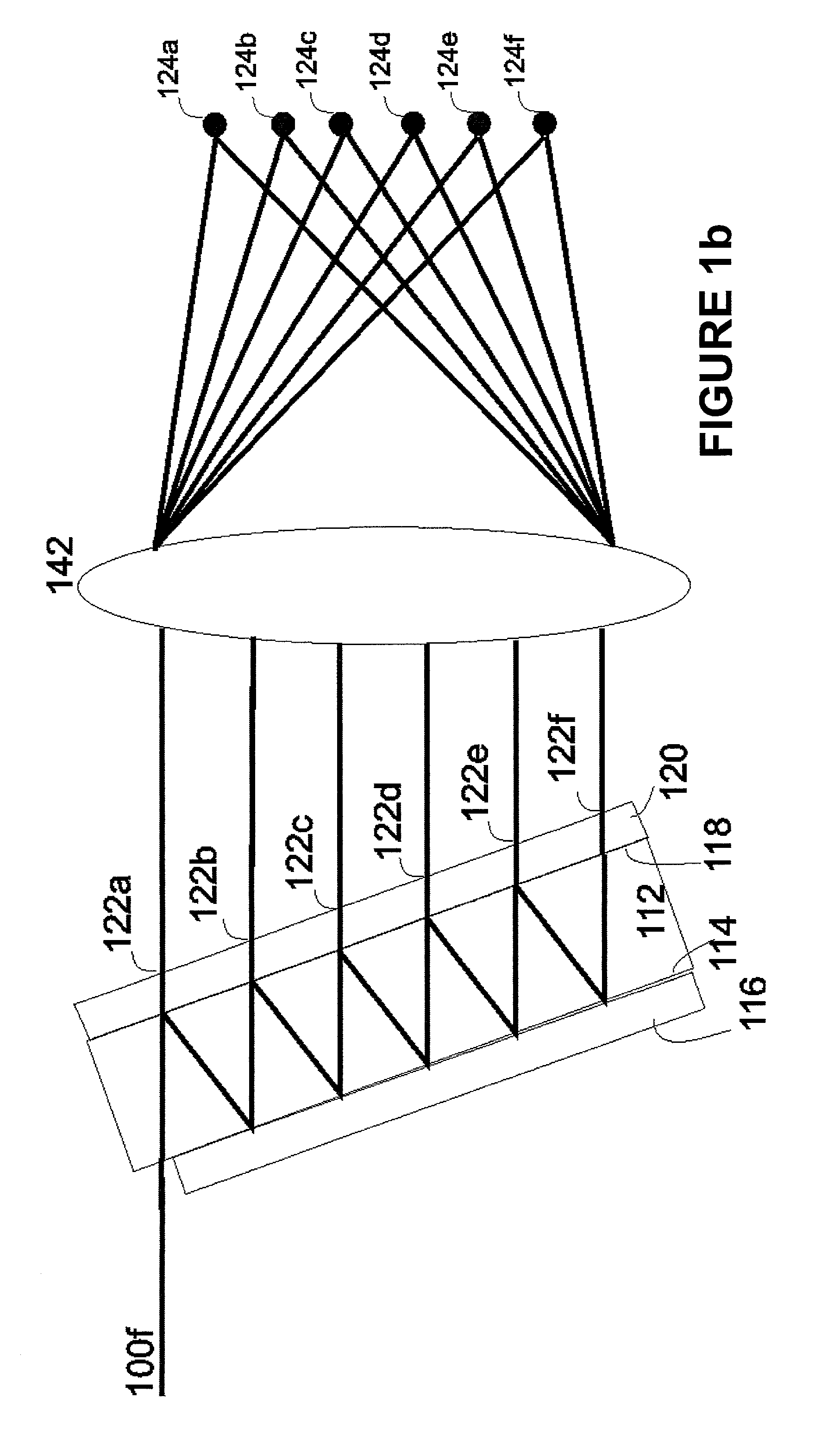Optical CDMA communications system using OTDL device
a communication system and optical codedma technology, applied in the field of optical codedivision multiple access communication systems, can solve the problems of inefficient dedicated bandwidth allocation architecture, low usable sequences, and users, and achieve low data rate signals, efficient utilization, and high resolution spectral separation
- Summary
- Abstract
- Description
- Claims
- Application Information
AI Technical Summary
Benefits of technology
Problems solved by technology
Method used
Image
Examples
Embodiment Construction
[0040]The following detailed description is of the best presently contemplated mode of carrying out the invention. This description is not to be taken in a limiting sense, but is made merely for the purpose of illustrating the general principles of the invention. The scope of the invention is best defined by the appended claims.
[0041]FIGS. 1(a) and 1(b) illustrate an example of an OTDL device according to an embodiment of the invention. As illustrated in FIG. 1(a), six collimated input beams 100(a)-100(f) preferably enter an optical cavity 112. The optical cavity 112 may be a transparent plate having a desired thickness. The thickness of the cavity determines the free spectral range (FSR) of the device, i.e., the optical frequency ambiguity, or the optical frequency difference of wavelengths that appear at the same wavelength location in plane 144 as illustrated, for example, in FIG. 1(a). The origin of the beams may be, for example, the collimated outputs of six optical fibers (not...
PUM
 Login to View More
Login to View More Abstract
Description
Claims
Application Information
 Login to View More
Login to View More - R&D
- Intellectual Property
- Life Sciences
- Materials
- Tech Scout
- Unparalleled Data Quality
- Higher Quality Content
- 60% Fewer Hallucinations
Browse by: Latest US Patents, China's latest patents, Technical Efficacy Thesaurus, Application Domain, Technology Topic, Popular Technical Reports.
© 2025 PatSnap. All rights reserved.Legal|Privacy policy|Modern Slavery Act Transparency Statement|Sitemap|About US| Contact US: help@patsnap.com



